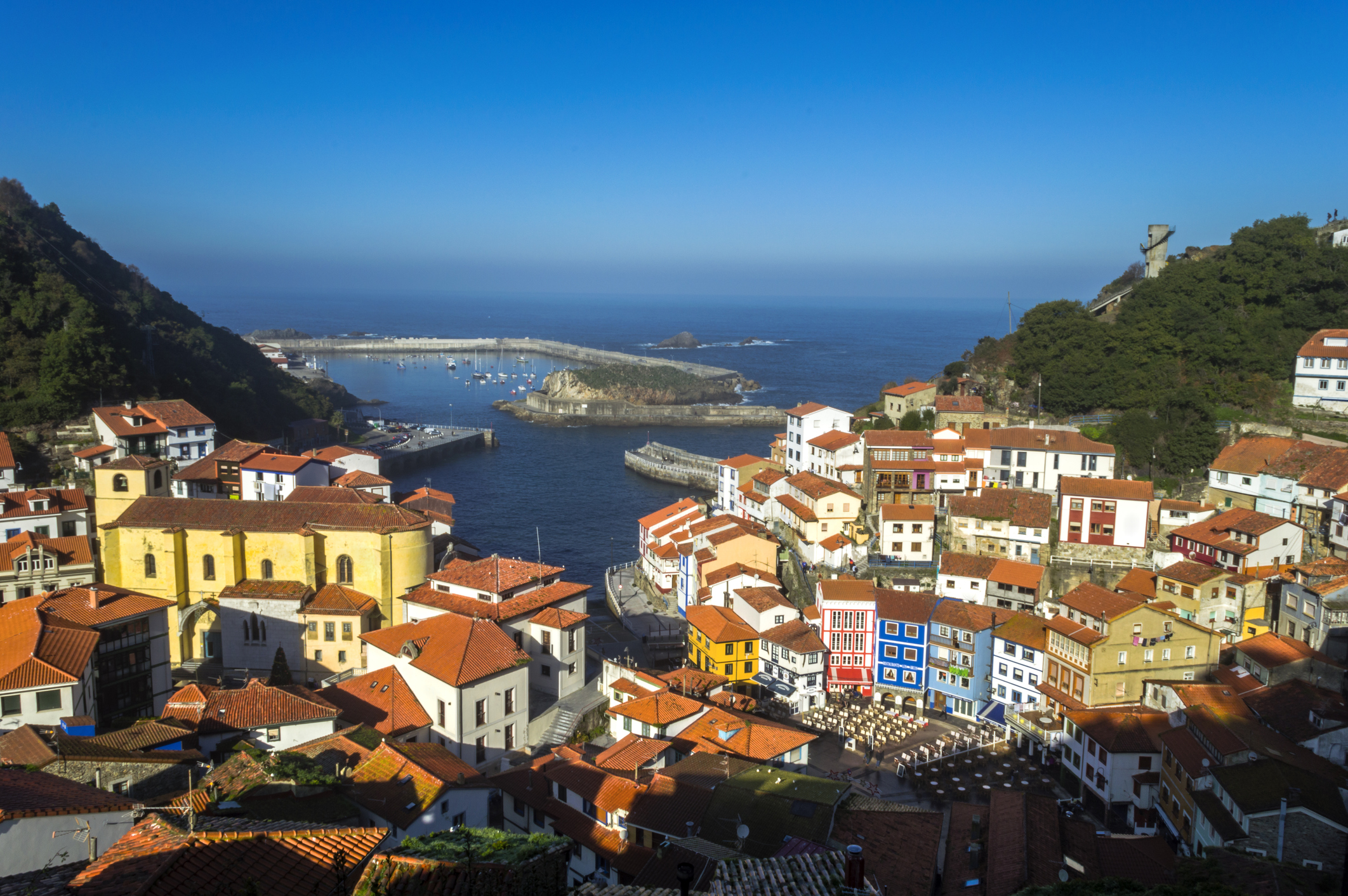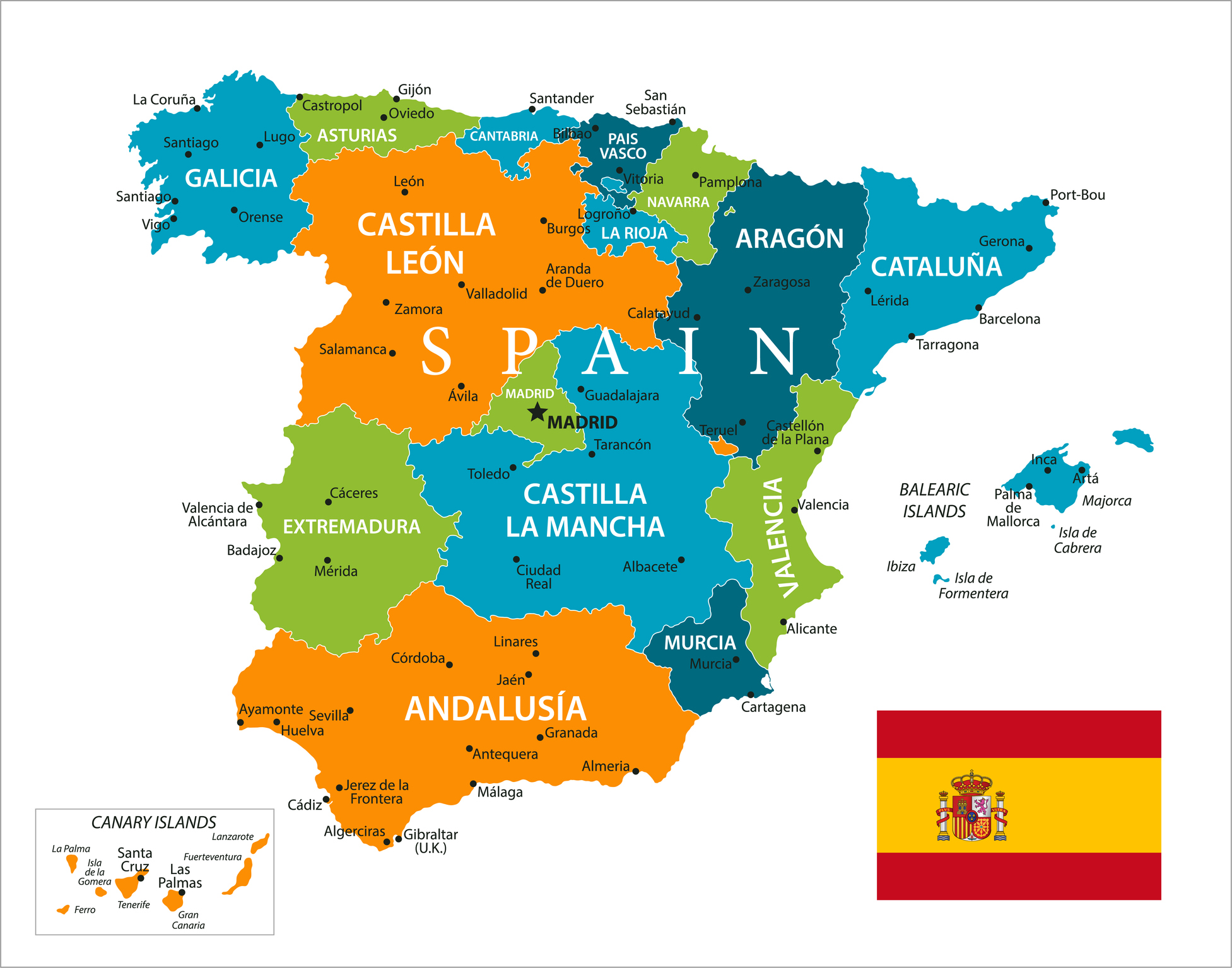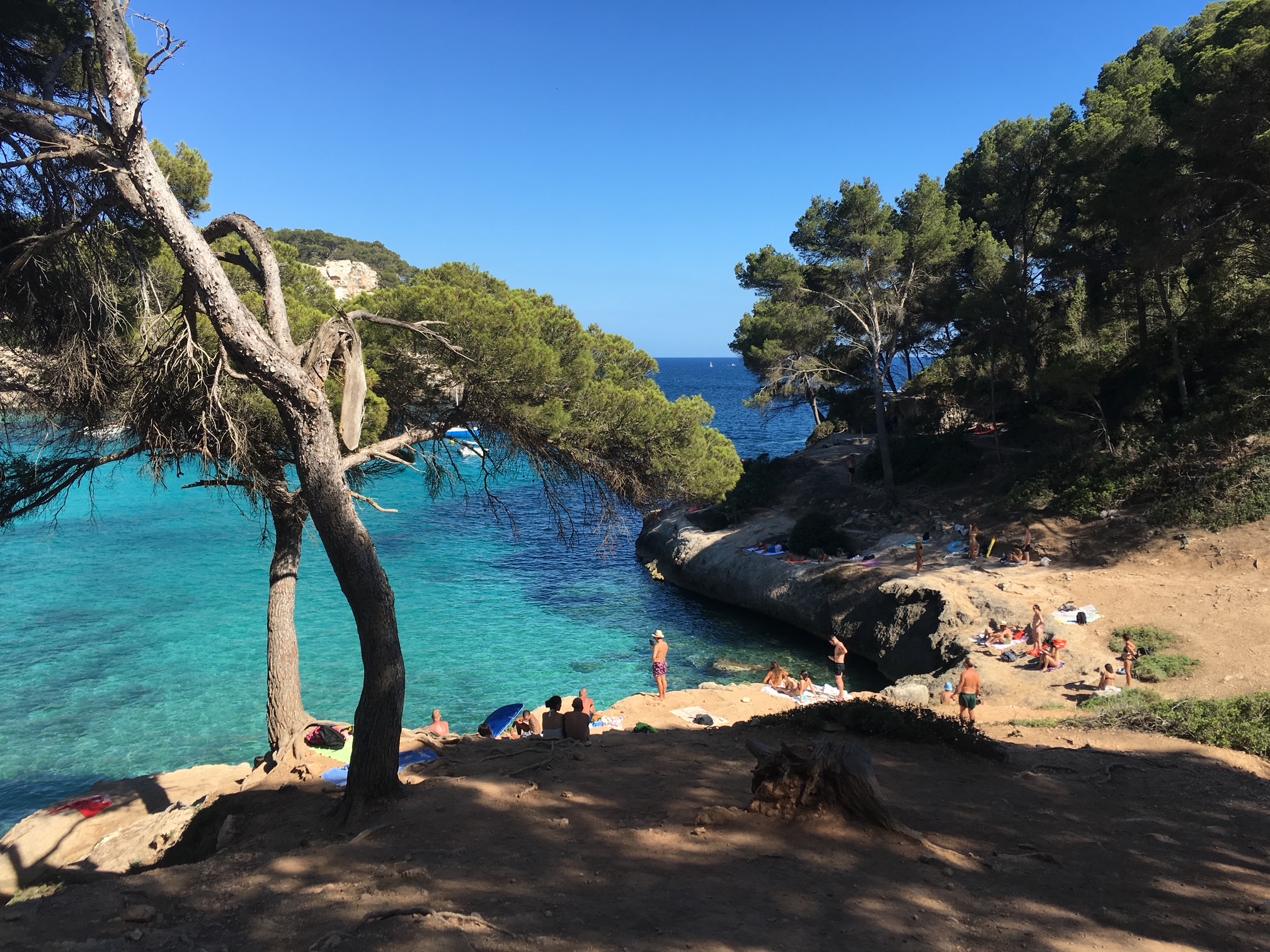Retire in Spain for Rich Culture, Cuisine and Coastal Bliss
US expats choose to retire in Spain for its sense of style, world-class beaches and cities, diverse lifestyles and its fabulous food and wine.


Editor’s note: "Retire in Spain" is part of an ongoing series on retiring abroad. To see all the articles in the series, jump to the end.
Spain is one of those seductive Mediterranean countries that became a victim of its own success, in terms of its allure for expats. A decade ago, as the country tried to recover from the global financial crisis, it welcomed expats through its golden visa program. Recent flush years have brought throngs of tourists to Madrid, Majorca, and especially Barcelona.
However, the golden visa program is no more, and Spaniards have pushed back against both conspicuous overtourism and home-buying expats who they say have priced locals out of the housing market.
From just $107.88 $24.99 for Kiplinger Personal Finance
Become a smarter, better informed investor. Subscribe from just $107.88 $24.99, plus get up to 4 Special Issues

Sign up for Kiplinger’s Free Newsletters
Profit and prosper with the best of expert advice on investing, taxes, retirement, personal finance and more - straight to your e-mail.
Profit and prosper with the best of expert advice - straight to your e-mail.
That said, Spain is still Spain, and it continues to be a draw for tourists and retirees, even if you risk getting squirted by a water gun while enjoying your Ibérico ham and manchego cheese at a sidewalk café. This country of 50 million boasts world-class cities; enchanting regional differences; palpable history and a deep-rooted arts scene; long, sandy beaches; and clusters of idyllic islands to suit everyone from partiers to quiet nature lovers.
The non-lucrative visa is the perfect way for retirees to live their golden years in a vibrant culture with a glass of the country’s famous wine in their hand.
Where to retire in Spain: best places to live

Many potential retirees are bound to start with Madrid, which is the kind of traditional Spanish city that most people recall when they think of Spain (e.g. Plaza Mayor). Another clear choice is the more casual Barcelona, which is more international and eclectic, with its fanciful Gaudi architecture, incomparable Boqueria market, and a beachfront location that brings to mind Miami or Tel Aviv. Madrid is located in the center of the country, with Barcelona on the northeast coast.
Federica Grazi, who specializes in retirement relocations to Europe, urges clients to look beyond Spain’s major cities for affordability and quality of life. “The Southern part of Spain is quite interesting because it has Valencia, which has a good community of expats, but there’s also Costa del Sol and Costa Blanca,” Grazi says. “They are a bit less expensive than the big cities, and overall, a bit warmer.”
On the high-speed train, it takes under three hours to get from Barcelona to Valencia, due south. Continue south to reach Alicante and the Costa Blanca, which features 120 miles of Mediterranean coastline. As you round the southern tip of the country toward Gibraltar, you encounter the Costa del Sol, in Andalusia, a key tourist attraction. The city of Málaga and the resort town of Marbella are its major population centers. Note, however, that southern Spain is experiencing increasingly severe heatwaves and overall warming. Many Spaniards flee hotter cities for the mountains or cooler locales in the summer.
As far as Spain’s famed and gorgeous Balearic archipelago — Majorca, Menorca, Ibiza, Formentera, etc. — Grazi notes that expensive Majorca and Ibiza are year-round as opposed to seasonal, but she still favors the mainland coast as a home base for retirees. “Anyone considering an island should go in January to see the vibe in the winter,” she cautions.

The sweet life in Spain
Moving to Europe had always been the plan for Robert Webber and his husband, Dennis Johnson, who lived in Los Angeles. However, they accelerated their retirement dream when they found themselves unemployed in 2018. By May of that year, Webber said, “Why are we waiting?” and they took advantage of the golden visa, which was available at the time.
“We found a place to live, and we got a vacation place to rent out for additional income,” Webber says. The couple settled in the gay-friendly coastal resort town of Sitges and opened the chocolate shop Sweet Sitges, speaking enough Spanish “to get by.” (“Almost everyone here speaks English,” he says.) Webber says he loves Prague, Amsterdam, and Berlin, but cold winters were a no-go. “Sitges’s microclimate is like LA’s,” he says.
He and Johnson, who’ve lived in several big American cities, felt Madrid was too much at this point in their lives, and that Sitges is right-sized for them. And yet: “There’s always something going on, like festivals and heritage events.” Plus, Webber notes that the town’s population of 32,000 swells to the hundreds of thousands in the summer.
Webber praises his Barcelona-based immigration attorney, Laura Fusté Lleixà, for facilitating the process, helping them convert their golden visa to a self-employed visa to better suit their situation (a few hoops to jump through there). Johnson teaches English online. Retirement turned out be busier than the couple had expected. And more welcoming.
“We have never felt unwelcome as U.S. expats,” Webber says. “Sitges has expats from all over the world. I think the best thing someone can do, as an expat, is to learn at least a little Spanish and learn the local customs and way of life. Don’t try to impose your own way of thinking or doing things on the locals.” His practical recommendation: “Become a regular at a small bar and get to know the locals and new home, and you will be welcomed. It won’t happen overnight, but it will happen.”

Visa matters
When countries discontinue their golden visas, as Spain did in April, many retirees and soon-to-be retirees have that sinking feeling of options dwindling, that they’ve missed their window. However, many countries offer non-lucrative visas designed for retirees, and Spain’s version is relatively painless. “It’s not very complex,” Grazi says, “and the thresholds are not particularly high.”
One major difference between the now-defunct golden visa and the non-lucrative visa is flexibility: You can’t work when you have Spain’s version of the non-lucrative visa — at all, not even remotely, and you must present a notarized affidavit to promise you won’t work. Here, retirement means retirement. That’s a huge life change, and a likely dealbreaker for many U.S. citizens, who increasingly desire a more gradual path to doing nothing but pleasure-seeking and rest. (Though Webber’s and Johnson’s story demonstrates that it is possible to change your circumstances and enjoy an entrepreneurial “retirement.”)
The basis for your qualification is passive income, about $32,000 annually, or $2,600 per month. If you want to bring family members (spouse, parents, and children), that will cost you nearly $8,000 more per person per year, or around $650 a month. Because those numbers are tied to the Spanish minimum wage, you have to keep your eye on legislative increases.
However, if you have at least some liquidity, you need not start calculating your Social Security benefits, fixed income numbers, or other investment windfalls. Simple savings can satisfy the passive income requirement. As in other countries, you have to get your financial documents in order to demonstrate passive income — if not retirement account statements, then bank statements and tax returns.
If you’re too young to be collecting Social Security or other retirement benefits, be prepared to prove termination, resignation, or sabbatical from your last job. Financial matters are always more complicated for the self-employed, or contractors; that’s why it’s important to work with a financial advisor, regardless of your former work status. Grazi suggests using a tax expert, whether you need an hour consultation or more extensive advice (for ultra-high-net-worth individuals). She partners with several advisers.
Grazi says that you can begin the non-lucrative visa process in the U.S., the initial goal is to gain a one-year residency card. After a year has elapsed, then you can renew it for two years. At the end of those two years, you can apply for an additional two years. “After five years, you can apply for permanent residency,” Grazi says.
Instead, if you want to become a digital nomad in your golden years, then go for Spain’s digital nomad visa, because the non-lucrative visa is not for you. But note that you must put in the hours to qualify for the digital nomad visa, earning at least 200% of the Spanish minimum wage, which is more than $3,000 a month in active income. When you’re hustling for remote contract work, that could eat up a third of your time, give or take.
Health care and taxes
Spain is rated as one of Europe’s top 15 countries for health care quality. Private health care insurance is compulsory for visa holders for up to around $200 per month, with public health care available once you attain permanent residency. However, if you have pre-existing conditions, you will need to shop around for private insurance. That can mean the difference between paying out-of-pocket for some medications (typically not expensive), or finding it more difficult to secure insurance coverage for certain treatments if you have a chronic, serious condition, like cancer.
Regarding taxation, once you have stayed in residence for the mandatory six months, you become a tax resident and are required to file in both the U.S. and Spain. But you can avoid double taxation: “It’s best to file first in Spain,” Grazi says, “then you get the tax credit for the U.S. You don’t need to pay twice.” The tax rate for most forms of passive income — including Social Security, pensions, and investment accounts — starts at 19% and escalates to 47% in a tiered, progressive scheme, as in the U.S.
Grazi also notes that as you age in Spain, you receive a higher tax deduction; reductions in the tax burden are triggered at ages 65 and 75. “There is a bit of a tax-free amount” as you age, she says.

Living in Spain: The takeaway
Spain is a large and diverse country, and since U.S. tourists can stay for 90 days, potential retirees may need all that time to figure out if they want to settle in a thriving city or a coastal tourist destination. Both types of places are magnets for expats.
With different visas on offer, you must think long and hard about whether you want to work not at all, part-time, or go the business-visa route, though the possibility to convert your visa type is there, at least for now.
Ultimately, Spain is open to different lifestyles; it is one of the most accepting places in the world for LGBT folks. Marriage equality became the law of the land in 2005, a decade before the right was federalized in the U.S., and trans rights are among the most progressive anywhere. Madrid, Barcelona, and Sitges are especially gay-friendly, as are the Canary Islands. (Watch this space for an upcoming piece on retirement in the Canaries.)
In Spain, life may not always be a Pedro Almodóvar movie, but in some places, it can feel pretty close.
More on where to retire abroad
- Retire in Japan: It Ain’t Easy, Unless You’re Special
- Retire in Belize for Stunning Natural Beauty and Culture
- Retire in Malaysia for Affordable Luxury
- Retire in Finland and Live the Nordic Dream
- Retire in Ecuador for an Affordable, Rich Life
- Retire in Costa Rica for Expat Heaven
- Retire in Malta for Quiet Coastal Perfection
- Retire in New Zealand for Lush Landscapes and a Relaxed Vibe
- Retire in Italy for Culture and Beauty
- Retire in Greece for Relaxed Living With a Cinematic Backdrop
- Retire in Thailand Where 'The White Lotus' Was Filmed
- Retire in Mexico: Get a Lower Cost of Living Near the US
- Where to Retire: Living in Portugal as a US Retiree
- Where to Retire: Living in the Dominican Republic
- Where to Retire: Living in Panama Offers Stability and Charm
- Where to Retire: Living in Brazil Is More Than Carnival, Coffee and Copacabana
- Where to Retire 2025: Puerto Rico
Profit and prosper with the best of Kiplinger's advice on investing, taxes, retirement, personal finance and much more. Delivered daily. Enter your email in the box and click Sign Me Up.

Drew Limsky joined Kiplinger Digital as a freelance retirement writer because he believes that every day offers opportunities to make better financial decisions, and that it’s never too late to learn how to enhance your financial position and lifestyle. Drew is the former editor of Lexus magazine, Cadillac magazine, South Florida Business & Wealth, Business Jet Traveler, Interiors South Florida, and Mariner (for Holland America). Drew’s writing credits include The Wall Street Journal, New York Times, LA Times, Washington Post, Boston Globe, Yahoo, Worth, AD, Robb Report, Metropolis, Men’s Journal, and Business Insider. An Emory grad, Drew earned his JD and PhD at NYU, and lives in Miami Beach, Brooklyn, and Cape Cod.
-
 Dow Hits New High Then Falls 466 Points: Stock Market Today
Dow Hits New High Then Falls 466 Points: Stock Market TodayThe Nasdaq Composite, with a little help from tech's friends, rises to within 300 points of its own new all-time high.
-
 The Best Vanguard Bond Funds to Buy
The Best Vanguard Bond Funds to BuyInvestors seeking the best Vanguard bond funds can pick between mutual funds and ETFs spanning maturities, credit qualities, tax treatment and geographies.
-
 Are You Afraid of an IRS Audit? 8 Ways to Beat Tax Audit Anxiety
Are You Afraid of an IRS Audit? 8 Ways to Beat Tax Audit AnxietyTax Season Tax audit anxiety is like a wild beast. Here’s how you can help tame it.